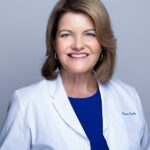Are You a Nurse Practitioner, Physician Assistant, Registered Nurse or Physician Interested in CME Credits?
2025 CME Conference and Online CME Courses
Skin, Bones, Hearts & Private Parts is a leading provider of high-quality CME conference topics covering dermatology, orthopedics, cardiology, emergency medicine, women’s health, and more. Enhance your medical education with CME from passionate, experienced speakers who inspire attendees. Our CME conference and online CME courses are a great way for nurse practitioners and physician assistants to gain information that allows them to diagnose patients quicker, feel more confident in their decisions and ultimately provide better patient care.
Choose any of our fun conference locations that cover the topics relevant to your practice or join us from the comfort of your home with our Virtual & On-demand CME courses. Check out all of our amazing topics and CME presentations offered below!
- Dermatology
- Orthopedics
- Cardiology/Obesity & Emergency Medicine
- Women’s Health
- Pain Management & Pharmacology
- Diabetes
Let Them Eat Cake! – Basic Science, Infections, Infestations & Bites (Rx=0.50)
This approach, inspired by Marie Antoinette, will allow you to easily assimilate cutaneous Anatomy and Physiology to understand how the skin works –and what happens when it doesn’t! This knowledge will fine-tune your differential diagnoses and improve your management of cutaneous lesions and eruptions. You will also enhance your confidence in addressing the germs, critters and puncture wounds which can invade the skin.
Facing the Music – Adnexal Diseases (Rx=0.50)
This expression originated from theatre, where performers had to literally face the music, the orchestra, and overcome stage fright. Patients with Acne and Rosacea are forced to Face the Music daily, as are those with diseases of the Hair and Nails. Additionally, patients with Cysts and Hidradenitis struggle with pain and scarring. Learn about the new guidelines and drugs which will allow your patients to look and feel their best! This session will also discuss the quiet part out loud by incorporating cultural sensitivity into your interactions with Sexual-Gender Diverse patients, up to date approaches to STDs, and enhanced safety in pregnancy.
The Curious Incident of the Dog in the Night – Papulosquamous Diseases (Rx=0.50)
How do you determine if the blotchy red rash on the hands of a newlywed just back from Margueritaville is from contact with sunscreen, limes, or his new wedding band? How can you tell if a rash is localized to the skin or a Cutaneous Manifestation of underlying Systemic Disease? What are the new guidelines to help patients who suffer with Atopic Dermatitis, The Itch that Rashes? How can you help your patients with Psoriasis gain control over this complex disease which affects them both inside and out? Sherlock Holmes, the infamous 19th century sleuth, was a master of observation and deductive reasoning. We can learn from his investigative skills and apply them to our assessment of skin rashes and how to manage them.
Better Living through Chemistry! – Dermatologic Therapies (Rx=1.00)
Do you have patients taking Biologics and JAK inhibitors prescribed by Dermatology, Rheumatology, or Gastroenterology but have been afraid to ask how they work? Do you have patients taking drugs prescribed by their Oncologist or Transplant surgeon which manage one disease only to increase the risk for others? This session will allow you to earn Pharma CMEs in keeping with clinical context so you can associate appropriate treatments for various skin diseases and increase your familiarity with new drugs. And Yes!! There ARE Dermatology Emergencies! We will review various rashes, potential toxicities and appropriate management of Drug Reactions which can erupt from even common medications.
What the Coppertone Girl Didn’t Know! -Neoplasms
Being able to identify harmless spots on the skin will not only allow you to provide reassurance to your patients when evaluating Benign Lesions but will also bring your attention to growths which have abnormal features. As the numbers of all types of Skin Cancers continue to increase, it is increasingly important for non-Dermatology providers to be able to identify suspicious lesions. This session will also provide you with multiple examples of worrisome, pigmented lesions which will increase your familiarity with atypical Moles. Early detection can absolutely reduce the morbidity and mortality of Melanoma!
Benign Lumps and Bumps
This lecture will focus on benign lumps and bumps, delving into their diverse origins, characteristics, and optimal management. From lipomas to cysts, you’ll gain the confidence to identify, assess, and communicate effectively with patients about benign lumps and bumps, ensuring comprehensive and reassuring care.
A Guide to Common Rashes (Rx=0.50)
This lecture will hopefully unravel the mystery of some common rashes ranging from viral eruptions to contact dermatitis. Discover effective strategies for managing and alleviating common rashes. From over-the-counter treatments to lifestyle adjustments, gain practical insights into providing relief for those pesky skin disruptions.
Vitiligo and Mimickers Explained (Rx=0.25)
The lecture starts with a comprehensive exploration of vitiligo, unraveling its etiology, pathogenesis, and the latest advancements in understanding this intriguing depigmentation disorder. Participants will delve into the nuances of vitiligo diagnosis, learning to distinguish it from an array of mimickers that often present with similar clinical features.
Dermatology Drugs for Inflammatory Conditions (Rx=1.00)
Participants will gain a deep understanding of the diverse range of dermatological drugs, from topical corticosteroids to cutting-edge biologics, designed to tackle inflammation at its core. The course will delve into these drugs’ mechanisms of action, indications, and potential side effects, providing attendees with a comprehensive knowledge base to make informed treatment decisions. We will navigate real-world scenarios through interactive case studies, refining their drug selection and patient management skills.
The Song and Dance of Dermatology (Rx=0.25)
Dive into the world of dermatology. We will explore the “song” of dermatology, including how to describe lesions and rashes. We will learn the “dance” of dermatology by showing you how to perform a full-body skin exam. Additional review topics will include completing a shave and punch biopsy and when to perform each. Lastly, learn how to “dance” with your partner, the dermatology provider. What can you do to set your patient up for success while they wait to get in with the dermatology specialist?
The Good, The Bad, The Ugly: Identifying Benign and Malignant Skin Lesions (Rx=0.25)
Skin cancer is on the rise. 1 in 5 Americans will develop skin cancer over their lifetime. It is important to know what signs and symptoms to look for in different types of skin cancer and to be familiar with common benign neoplasms. This lecture is very visual and will include numerous photos to help attendees recognize these lesions. We will also utilize what we learned from the previous lecture by describing lesions as we go along.
Son of an Itch! What’s So Itchy? (Rx=0.50)
One of the most common and complex complaints in dermatology is itch. Learn how to approach itch in your clinic and common causes of itch. We will discuss both common and uncommon causes of itch, including atopic dermatitis, bullous pemphigoid, urticaria, id reaction, stasis dermatitis, prurigo nodularis, lichen planus, dermatitis herpetiformis, transient acantholytic dermatosis, psoriasis, and more.
Make Your Skin Crawl: Common Skin and Soft Tissue Infections and Infestations (Rx=0.50)
We will explore various bacterial, fungal, viral, and parasitic infections and infestations. We will discuss the diagnosis and treatment of abscesses, tinea (capitis, corporis, pedis, cruris, unguium), molluscum contagiosum, condyloma acuminata (HPV), cellulitis, herpes simplex virus, herpes zoster virus, pediculosis (capitis, corporis, cruris), syphilis, scabies, verruca, and others. We’ll get your skin crawling!
Love the Skin You’re In (Rx=1.00)
One of the most common questions in dermatology is “how should I take care of my skin?” This lecture will review anti-aging tips, including addressing wrinkles, dark spots, and facial rashes. We will cover topical treatments, neurotoxins, microneedling, chemical peels, and fillers. Common facial rashes we will discuss include rosacea, acne, atopic dermatitis, seborrheic dermatitis, and tinea facei. By the end, you will feel confident you can keep your patient feeling confident in their skin!
I Am Not Spineless
This session will focus on an all-too-common problem, low back pain. A short introduction to the anatomy will take us into the commonly seen complaints in urgent care and PCP offices. Next, we will review and understand red flags and pathologic reflexes that would alert the clinician for a prompt referral. A brief review of the treatment options will also be discussed. Video clips, X-ray, MRI, and CT imaging will be used to help demonstrate pathology. This presentation will help remove some of the fear and uncertainty of low back pain.
The Pain in My Neck Is Not From the In-Laws
This session will focus on non-traumatic neck pain and cervical radiculopathy. The participants will learn various exam techniques through video and a strong understanding of the neurologic anatomy associated with neck complaints. Specialized testing for cervical myelopathy will be addressed as well as a physical exam for the non-trauma neck pain patient. A brief review of the treatment modalities and radiographic findings will also be demonstrated. This presentation will assist the clinician in understanding urgent from routine pathology.
These “Joints” Are Legal in All 50 States: Evaluation and Presentation for Shoulder, Hip, and Knee in Primary Care
A comprehensive review of each joint’s anatomy and explore various provocative testing techniques used for the assessment of these presentations. We will start with a detailed overview of the anatomy of the knee, hip, and shoulder joints, highlighting their key structures and common issues. Following this, we will demonstrate and discuss several provocative tests that are crucial for diagnosing joint-related problems. This session will include video demonstrations to illustrate the correct application of these tests and facilitate a deeper understanding through interactive discussions. By the end of this session, you will be equipped with valuable skills to assess joint pain and injuries effectively.
CXR for the PCP…Do You See What I See?
Chest X-ray (CXR) is the most ordered radiologic diagnostic, yet it can be one of the most complex to understand. CXR combines organs, bones, soft tissue and comprises innumerable pathology of the cardiac, pulmonary, and gastric systems, to name a few. This presentation will break down CXR interpretation by first reviewing what is expected. Then, multiple diagramed studies will be used, and typical findings related to asthma, COPD, cardiomegaly, infiltrates, Covid, CHF, & pneumothorax. Finally, case studies will be used to enhance the learning process.
At Least It Is Only Fractured and Not Broken
This session will be a “smorgasbord” of radiologic case studies. Numerous cases from a local emergency department will be reviewed, covering the common and not-so-common osseous diagnosis and treatment options. Topics will also include commonly diagnosed fractures, dislocations, and soft tissue abnormalities diagnosed with plain radiographs. This will be a fun participant interaction presentation.
Introductions to the Basics of Musculoskeletal Imaging: What Am I Even Looking At?
What better way to start a day in Orthopaedics than a deep dive into Musculoskeletal imaging. Do you find yourself worried about ordering the correct images or the right test? Do you have trouble interpreting the x-ray/ MRI/ CT images that you ordered? Don’t rely completely on the radiologist’s interpretation. This presentation will examine the basics of Musculoskeletal Imaging. We’ll discuss indications for ordering appropriate images, when to order x-ray vs CT vs MRI, and how to interpret those images for associated fractures or sprains. The majority of Orthopaedic related injuries require some form of diagnostic imaging. Join me for this session on Musculoskeletal imaging to increase your confidence with interpreting radiology studies and finally find out just what you are looking at.
Fracture Description and Management using X-ray Vision: Is it Broken or Fractured? (Rx=0.25)
Ever wish you had x-ray vision to see the 206 bones that make up the skeletal system? Let’s take a look below the surface of the skin to answer every patient’s burning question: Is it broken or fractured? Hopefully, you already know how to answer that question. This presentation will review some common x-ray findings and breakdown methods to describe fractures. When making a patient referral to Orthopaedics, the correct fracture description can often help in determining whether the fracture can be treated with or without surgical intervention. We’ll also discuss the appropriate management of commonly seen fractures such as those involving the foot, ankle, shoulder, wrist, and hand. This presentation will cover different medical conditions that may delay bone healing in fractures, differences between acute fractures and stress related injuries, and the nuances of growth plate injuries in pediatric patients. Join me for this session on Orthopaedic fractures, and we’ll develop a treatment plan to get all 206 bones back in alignment.
Orthopaedic Injuries Below the Belt: It’s Going TIBIA OK! (Rx=0.25)
Let’s start with lower extremity injuries. This presentation will start at the foot, work upwards through the ankle, knee and hip, and finish at the lumbar spine. Maybe your patient is an avid runner with knee pain, an elderly patient with hip pain, or someone that took an awkward step at the bottom of the stairs resulting in ankle pain. We’ll cover the most commonly seen injuries involving these lower extremity joints, discuss physical exam findings with corresponding radiology results and review appropriate management strategies. This presentation will provide a breakdown of treatment options including non-operative treatment (i.e. medications, injections, physical therapy) and indications for surgical treatment. Join me for this session on lower extremity injuries, and you can begin to reassure your patients: It’s going TIBIA OK!
Orthopaedic Injuries Above the Waist: They Aren’t All Humerus! (Rx=0.25)
Time to move above the waist and talk about upper extremity injuries. This presentation will start at the hand, work upwards through the wrist, elbow and shoulder, and finish at the cervical spine. Maybe your patient is a carpenter with wrist pain, a pitcher with elbow pain, or someone who fell off a ladder resulting in shoulder pain. We’ll cover the most commonly seen injuries involving these upper extremity joints, discuss physical exam findings with corresponding radiology results and review appropriate management strategies. This presentation will provide a breakdown of treatment options including non-operative treatment (i.e. medications, injections, physical therapy) and indications for surgical treatment. Join me for this session on upper extremity injuries, and you can have your patients back to laughing in no time!
Orthopaedic Physical Exam Techniques: Stop Pulling My Leg and Twisting My Arm!
The hallmark of the musculoskeletal assessment: knowing your anatomical landmarks and using special tests to narrow down your differential diagnosis. It’s nearly impossible to know every special test mentioned in text. During this presentation, I’ll walk you through my Orthopaedic physical examination, and we’ll break down some key physical exam findings that will help you determine when further advanced imaging may be warranted. Is it neck or shoulder pain? Is it back or hip pain? This presentation will provide you with tips and pearls to streamline your musculoskeletal assessment and be confident in your diagnosis. Feel free to leave your stethoscope at home for this session. This hands-on session will allow you to practice any Orthopaedic special test that causes you anxiety. Join me for this Orthopaedic physical exam session, and we’ll look to perfect your musculoskeletal assessment. Don’t make me twist your arm!
Treating Obesity Can Treat the Heart and Much More: 200+ Obesity Complications
In this presentation, we will utilize case studies and review the explanation of how obesity is at the root of 236 obesity-associated disorders. Pathophysiology of the disease of obesity and its consequences, with an explanation of treatment that targets obesity and the complications, will also be discussed.
Cardiometabolic Treatment for Obesity (Rx=0.25)
An overview of the intersection of obesity, T2DM, and hypertension pathophysiology will set the stage for understanding how traditional and novel anti-obesity therapies impact these diseases and the cardiac implications.
Managing Obesity in Primary Care: Yes, It Can Be Done (Rx=0.25)
Most primary care providers ask, “How can I add another disease to be treated to my already very busy schedule, especially one that is impacting so many of my patients?” This presentation will demonstrate through a case study how to integrate the treatment of obesity into primary care using evidence-based guideline treatment.
Treating Obesity Inside and Outside the Labels (Rx=0.50)
Today’s reality for pharmacology treatment of obesity on-label provides limited choices, including choices limited by cost. Experienced clinicians treating obesity recognize the value of on-label prescribing when available and appropriate but also look to off-label use of medications for obesity treatment. This presentation will briefly review current FDA-approved medicines approved for the long-term treatment of the chronic disease of obesity. The discussion will then move to the long-term use of FDA-approved short-term medications and medications known to support weight loss but do not have FDA approval for that purpose. Case studies will be utilized to demonstrate these situations.
Treatment of Complicated Patients with Obesity (Rx=0.50)
Obesity is the most common chronic disease in the United States and is at the root of over 236 complications, including 14 obesity-related cancers. In this presentation, case studies and a review of treatment plans will be demonstrated in patients with multiple chronic diseases.
“Arrhythmia’s Gonna Get You” – Atrial Fibrillation (Rx=0.25)
We will review the most common arrhythmia, Atrial Fibrillation. Diagnosis and the acute/chronic management through lifestyle and implications of pharmacologic treatment will also be discussed.
“Under Pressure” – Hypertension (Rx=0.25)
We will review updated guidelines and the importance of early diagnosis and intensive treatment of Hypertension. Diagnosis and chronic management through lifestyle and pharmacologic treatment will also be discussed.
“Head Above Water” – Heart Failure (Rx=0.25)
We will review the updated Heart Failure guidelines by reviewing chronic management through lifestyle and the importance of pharmacologic treatment.
“Heart Attack” – Coronary Artery Disease (Rx=0.50)
We will review the continuum of coronary artery disease from acute coronary syndrome to chronic management. Chronic management through lifestyle and the importance of pharmacologic treatment will also be discussed.
“I Can’t Walk 500 Miles” – Peripheral Artery Disease
We will review peripheral arterial disease and the importance of screening and early intensive management to reduce the risk of amputations and other cardiovascular disease events through lifestyle and pharmacologic treatment.
Taking a Sexual History (Rx=0.25)
Afraid to ask? Not sure what to say if your patient wants to talk about their sexual health? As a healthcare provider, you’re not alone. Few of us have had any education or training in sexuality, which leads to patients who are hesitant to ask and providers understandably hesitant to tell. In this lively and practical session, you’ll learn the evidence-based, tried, and true ways to efficiently elicit pertinent information and then provide reassurance, validation, and the information they need for better sexual health.
LGBTQ+: Navigating the Alphabet
When it comes to providing respectful healthcare for individuals, we want to meet people where they are and treat the whole person. Everyone has their own unique personal and medical history, as well as gender identity and sexual orientation, which can impact the type of primary care, preventive screenings, and recommendations we make. This session will give you the tools you need to understand the evolving terms and definitions and provide respectful care to your patients.
Dispelling Sexual Myths (Rx=0.50)
In the age of social media and rampant misinformation, there have never been more people perpetuating sexual myths that can impact a person’s self-esteem, relationships, risks of pregnancy and STIs, as well as their enjoyment. In this session, you’ll learn the myths, the context, and how to dispel and educate your clients while normalizing their desire to understand their bodies and their sexuality. And who knows, you might even learn a few things yourself along the way.
Menopause 101 (Rx=0.50)
Menopause is having a moment. There is more information and disinformation that both patients and clinicians are challenged with. More than 20 years after the WHI, your patients are now more interested in hormones and new non-hormonal treatment options that are research backed and evidence based. This mini course in Menopause management will help every clinician recognize the laundry list of symptoms beyond hot flashes and night sweats and have understanding of how to treat. Virtually every aspect of life is impacted by this hormonal transition, from sleep and cognition to mood and bone health. In this session, you’ll learn the latest research on the impact of hormonal changes on the brain, sleep, memory, and mood. You’ll also learn pharmacologic and non-pharmacologic strategies to provide patients that helps improve all aspects of their quality of life.
Perimennopause
The hormonal roller coaster of perimenopause is often overlooked, minimized and dismissed by patients and clinicians. And yet, 50% of people at midlife will have irregular bleeding. Many more are confused by the unpredictable nature of symptoms that come and go for 3-7 or more years. From hot flashes and night sweats to weight gain, loss of libido and exhaustion, you’ll learn the symptoms and how to provide evidence-based therapeutic options to your patients.
Current Contraceptive Options and Approaches (Rx=0.75)
Ready to arm your patients with the options, the data around risks and benefits and help them break down the myths surrounding hormonal contraception? We’ll discuss different types of pills and the hormones in them, and then move on to long acting reversible contraceptives (LARCs) – IUDs and Etonogestrel Implant. We’ll review insertion techniques and pain control options for a trauma informed approach to IUD insertion. We’ll also discuss difficult insertions and removals, as well as who can use LARCs and at what points, including appropriate use of contraceptives in gender diverse folx.
Let’s Talk PCOS and Endometriosis! (Rx=0.25)
PCOS is one of the most common endocrine/metabolic disorders in females. Approximately 10% of reproductive aged females have PCOS, and approximately 10% of reproductive aged females have endometriosis. Yet both of these disorders are widely misunderstood, under-diagnosed, and under-treated. We’ll examine the impact of these disorders on your patients, and dive into the different phenotypes and why both are often a missed diagnosis. Then we’ll move on to options for treatment, including hormonal, non hormonal, and holistic measures for improvement in symptoms.
Low Libido – Yeah, You Can Treat That! (Rx=0.25)
Time for sex ed for grown ups! Let’s examine the role and function of the female sexual response cycle, how it’s different from, but not the defunct version of, male sexuality. And how to appropriately counsel our patients when they ask us how to improve their low libido, or their pain with sex. We’ll discuss options for creating a safe and empowering space for your patients to ask their burning questions and for you to feel confident in your answers! And the best part, we’ll do all of this with science! No more shame in sexuality. This is general medicine and we can create a comfort and confidence in this facet of medicine for you. We’ll review mechanisms of arousal and orgasm, and the pharmacologic and non pharmacologic interventions you can utilize in practice.
Menopause Madness: Breaking It Down! (Rx=1.00)
One hormone at a time. How many patients have asked you to check their hormones, because “something just isn’t right” or “I keep gaining weight”? We’re going to break it all down – hormones, perimenopause, menopause, The Women’s Health Initiative (WHI), the up to date data on hormone risks and benefits so you can answer those seemingly unanswerable questions. The WHI still plagues both prescribers and patients with its longstanding effects on perceptions of hormones, so let’s clarify what the data showed and what that means for your patients.
Say It With Me – “V” Is for Vulva, Vestibule, Vagina (Rx=0.50)
BV accounts for 40-50% of all cases of vaginitis, with yeast following closely behind. Yet little is known or undestood about these infections when they become recurrent. How does our vaginal microbiome play into this? Do probiotics help? What can we as providers do to help our patients who suffer with these recurrences? Leave today with increased understanding of diagnosis and treatment guidelines.
Let’s Be Blunt: Can Cannabis and Opiods Play Nice in Pain Management? (Rx=0.75)
Let’s explore how medical cannabis and opioids can complement or challenge each other in modern pain care. We’ll examine the pharmacology, efficacy, and practical strategies for integrating these therapies while ensuring patient safety and regulatory compliance.
Acute Pain Management in Ambulatory Adults & Marginalized Populations (Rx=0.75)
General principles and safety considerations for acute pain management of opioid-naïve adults. Discussion of pain care for marginalized populations, and recognition and management of undertreatment and bias.
The Pain Management Playbook: 5 Essential Tips for Primary Care Providers (Rx=0.50)
Learn 5 key strategies to master pain management in primary care. This session offers practical tips for comprehensive pain assessment, safe prescribing, prioritizing non-pharmacologic approaches, setting functional goals, and managing referrals effectively.
All About Opioids: Selection, Rotation, Tapering and Review (Rx=1.50)
Discussion of appropriate patient selection, medication choice and dosing based on pain severity and patient comorbidities; pharmacokinetics, and pharmacodynamics of pure agonist and mixed agonist-antagonist opioids. Discuss opioid rotation, optimizing analgesia, and management of side effects. Discuss risk assessments, opioid tapering, naloxone, and key patient education with case study examples.
Pain and the Power of Suggestion
Hypnosis and suggestion for pain management – what the research says, how to communicate with direct and indirect suggestions, and placebo and nocebo influence in conversations with patients. Learn about response expectancies and practical implementation of suggestions in clinical practice for therapeutic benefit.
It Is More Than Just “High Sugar”: Comprehensive Medical Evaluation and Assessment of Comorbidities
People with diabetes should receive comprehensive care with an interprofessional team. This program will discuss taking a person-centered approach to care that involves a relationship between provider and person with diabetes in treatment management. It will review the comprehensive medical evaluation and assessment of comorbidities for the individualized person.
Positivity and Prevention: Positive Health Behaviors and Well-Being for the Person Living With Diabetes, Prediabetes, and Obesity
Positive health behaviors and psychological well-being are the foundation to improved outcomes for diabetes, prediabetes, and obesity. This program will discuss self-management education including nutrition, physical activity, and psychosocial care. Obesity is a chronic and relapsing disease that increases the risk of type 2 diabetes. Weight management and prevention will be discussed including pharmacologic and surgical interventions.
It Is Time for Medication: How to Choose the Diabetes Medication in a Person-Centered Approach (Rx=1.00)
There are so many options for medication management with type 2 diabetes. It is imperative to take a person-centered approach when selecting medication. This program with discuss non-insulin medication and initiating and intensifying insulin therapy to meet the needs of the person living with diabetes.
Beyond Glycemic Management: Assessing and Managing Comorbidities and Complications (Rx=0.50)–
ASCVD is the leading cause of morbidity and mortality for individuals with diabetes. Chronic kidney disease occurs in 20 to 40% of people with diabetes. Complications of diabetes such as retinopathy and neuropathy have profound effects on quality of life. This program will focus on assessing and managing these comorbidities and complications that occur in the people living with diabetes.
Technology and Diabetes: Advancing Diabetes Management With Technology (Rx=0.25)
Technology has changed our world including how we manage people living with diabetes. Multiple technology advancements for diabetes will be discussed including CGM and insulin delivery devices. A discussion on downloading and interpreting AGP reports will help the provider to implement shared decision making into their practice.










